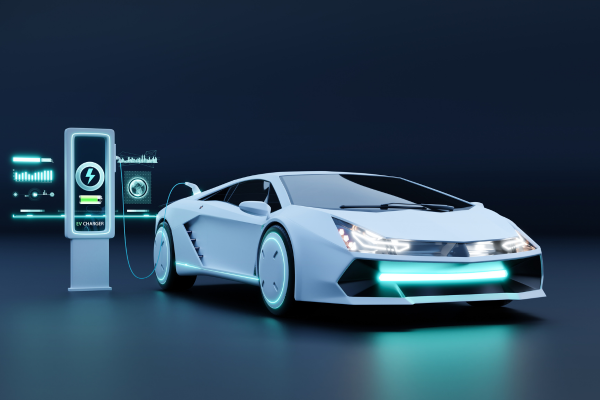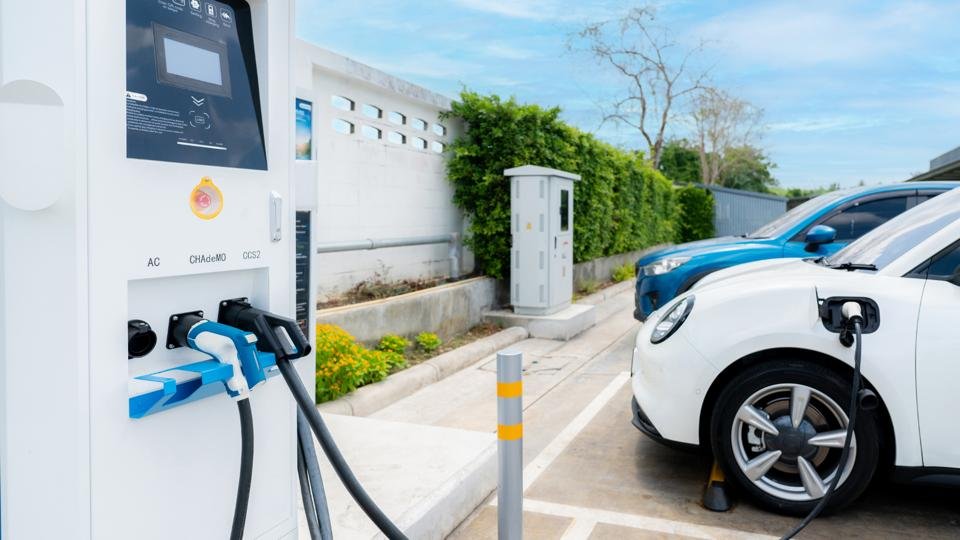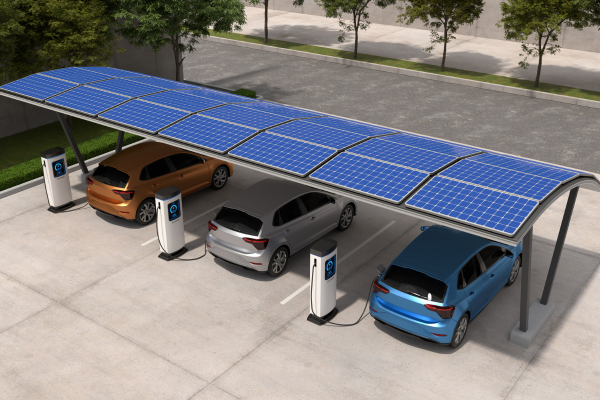Table of Contents
- Introduction
- Types of Charging Infrastructure of EVs
- Deployment Strategies for EVs Charging Infrastructure.
- Challenges And Opportunities For EVs
- Conclusion
- Frequently Asked Questions
Introduction:
Types of Charging Infrastructure of EVs
1. Level 1 Charging:

- Level 1 chargers, also known as trickle chargers, utilize a standard 120-volt household outlet.
- Suited for overnight charging at home or in workplaces where EVs are parked for extended periods.
- Provides a slow charging rate, typically adding 2-5 miles of range per hour of charging.
- Offers a convenient and cost-effective solution for EV owners with access to dedicated parking spaces.
2. Level 2 Charging:

- Level 2 chargers operate on a 240-volt circuit, delivering a faster charging rate compared to Level 1 chargers.
- Commonly found in public charging stations, workplaces, and residential settings.
- Charging speeds vary but typically add 10-30 miles of range per hour, making them suitable for mid-day top-ups or longer stays.
3. DC Fast Charging (DCFC):

- DC fast chargers provide the fastest charging rates, capable of adding significant range in a short amount of time.
- Utilize direct current (DC) to bypass the vehicle’s onboard charger, delivering high-power charging directly to the battery.
- Ideal for long-distance travel and quick charging stops, offering convenience for drivers on the go.
- Common DC fast charging standards include CHAdeMO, CCS (Combined Charging System), and Tesla Superchargers.
Deployment Strategies for EVs Charging Infrastructure:
1. Residential Charging:

- Home charging represents the foundation of EV ownership, enabling drivers to conveniently charge their vehicles overnight.
- Incentives and rebates for home charger installation encourage residential EV adoption and reduce reliance on public charging infrastructure.
- Integration with smart home energy management systems allows for optimized charging schedules and energy consumption.
2. Workplace Charging:

- Workplace charging stations encourage EV adoption among employees, providing convenient charging options during the workday.
- Employers may receive tax incentives and grants for installing workplace charging infrastructure, promoting sustainable transportation initiatives.
- Charging stations can be integrated with employee benefits programs, offering perks such as subsidized charging rates or reserved parking for EV drivers.
3. Public Charging Networks:

- Public charging networks play a crucial role in supporting EV drivers on longer trips and in urban areas where access to home charging may be limited.
- Strategic placement of charging stations along major highways, urban corridors, and commercial centres enhances EV accessibility and convenience.
- Interoperability between charging networks and seamless payment systems streamline the charging experience for drivers, reducing barriers to EV adoption.
Challenges and Opportunities for EVs:
1. Range Anxiety:
- Range anxiety, the fear of running out of battery charge before reaching a destination, remains a significant concern for prospective EV buyers.
- Increasing charging infrastructure density, expanding fast charging networks, and improving charging speed and reliability help alleviate range anxiety and build consumer confidence in EVs.
2. Grid Integration:
- The widespread adoption of EVs poses challenges to the electrical grid, including increased demand for electricity and potential strain on distribution infrastructure.
- Smart grid technologies, demand response programs, and vehicle-to-grid (V2G) integration offer solutions to optimize grid management and support the integration of renewable energy sources.
3. Equity and Accessibility:
- Ensuring equitable access to charging infrastructure is essential to promote EV adoption among underserved communities and mitigate disparities in transportation options.
- Targeted deployment of charging stations in disadvantaged neighbourhoods, along public transit routes, and in multi-unit dwellings addresses barriers to EV ownership and promotes social equity.
Conclusion:
- Collaboration between government agencies, utilities, automakers, and charging infrastructure providers is essential to overcome regulatory hurdles, streamline permitting processes, and accelerate the deployment of charging infrastructure.
- Investment in research and development is key to advancing charging technology, improving charging efficiency, reducing costs, and enhancing user experience.
- Public awareness campaigns and education initiatives play a crucial role in promoting EV adoption and familiarizing consumers with charging infrastructure options and benefits.
- Integration of renewable energy sources, such as solar and wind, into charging infrastructure helps reduce greenhouse gas emissions and supports the transition to a low-carbon energy system.
- Continued innovation in battery technology, such as higher energy density and faster charging capabilities, will further enhance the appeal and viability of electric vehicles.
- Partnerships with retail outlets, hospitality venues, and other businesses can expand the reach of charging infrastructure and provide added convenience for EV drivers during their daily routines.
Frequently Asked Questions
There are primarily three types of EV charging stations: Level 1, Level 2, and DC fast chargers. Level 1 chargers use a standard 120-volt household outlet and are suitable for overnight charging. Level 2 chargers require a 240-volt outlet and charge faster than Level 1 chargers. DC fast chargers provide the quickest charging times and are typically found along highways and major routes.
Public EV charging infrastructure accessibility varies by region, but efforts to expand it are underway globally. Governments, businesses, and utilities are investing in expanding charging networks, incentivizing private investment, and implementing regulations to ensure widespread accessibility. Initiatives like installing charging stations in public spaces, workplaces, and multi-unit dwellings are becoming more common to address accessibility concerns.
Electric utilities play a crucial role in supporting EV charging infrastructure by providing power to charging stations, managing grid demands, and implementing innovative solutions like demand response programs and smart charging technologies. Many utilities are investing in upgrading infrastructure to accommodate increased EV adoption and integrating renewable energy sources to power charging stations sustainably.
Advancements in EV battery technology, such as higher energy densities and faster charging capabilities, influence charging infrastructure requirements. Faster-charging batteries reduce the time needed for charging sessions, potentially increasing demand for fast-charging stations. Moreover, improvements in battery range lessen the need for charging stations in some areas, while increased energy density may necessitate upgrades to accommodate higher power outputs.
Interoperability and standardization of EV charging infrastructure remain significant challenges. Various charging networks, proprietary connectors, and payment systems can create confusion for EV drivers. However, industry stakeholders are working towards standardizing charging protocols, connectors, and payment methods to enhance user experience and promote interoperability. Initiatives like open standards for charging networks and interoperable payment platforms aim to simplify the charging process for EV drivers.

